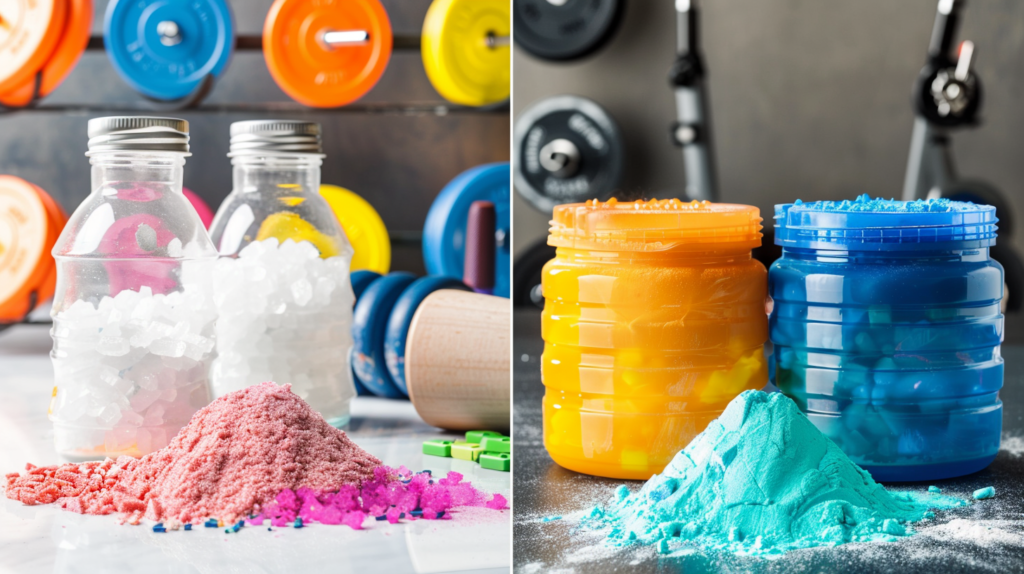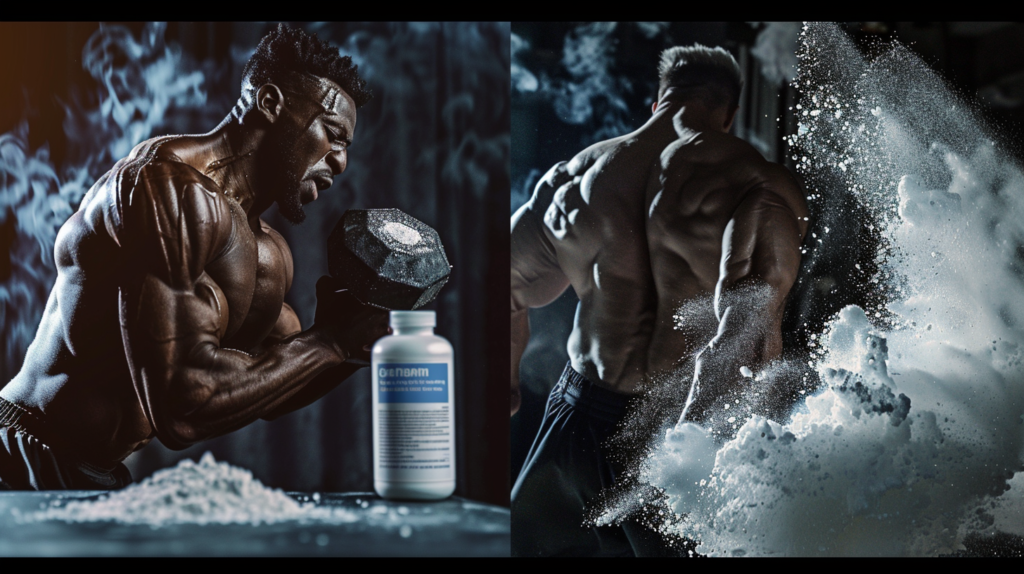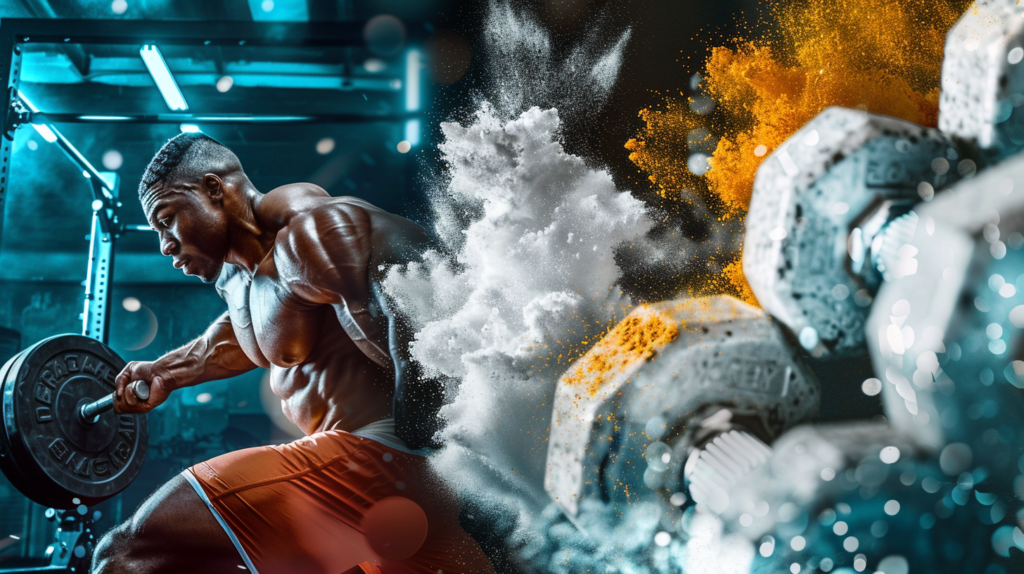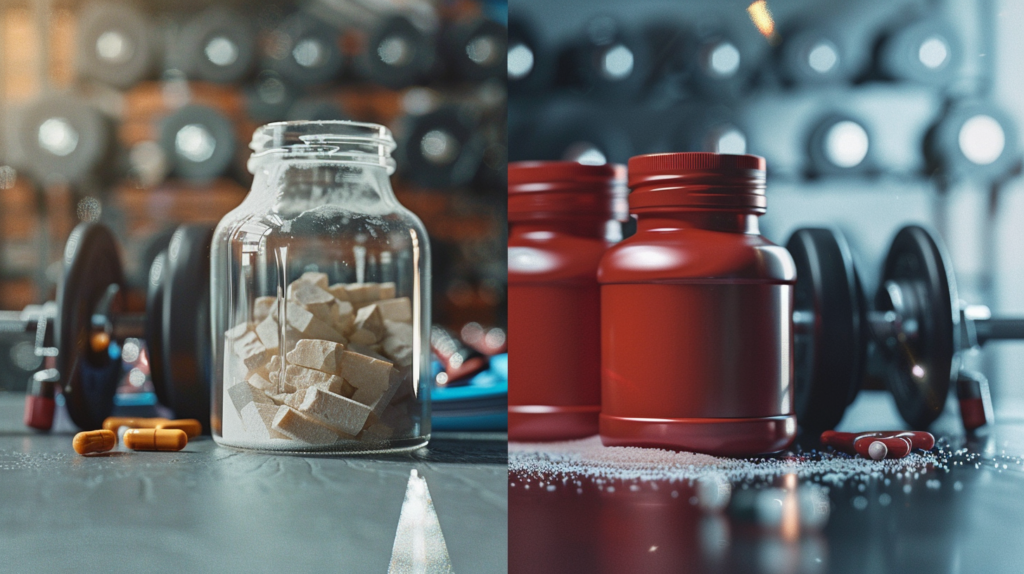The comparison between creatine monohydrate and HCL reveals unique advantages for athletes. Creatine monohydrate is extensively researched, known for greatly enhancing strength and lean muscle mass. In contrast, HCL offers higher absorption rates and improved solubility, resulting in fewer gastrointestinal issues. It also eliminates the need for a loading phase, making it more convenient. Both forms are effective, though their applications may differ based on individual needs. Athletes should consider factors like absorption rates and convenience when choosing between them. Exploring these differences further will provide insight into optimizing supplementation strategies.
Key Takeaways
- Creatine monohydrate is extensively researched, proven effective for strength and muscle gain, while HCL offers similar benefits with less gastrointestinal discomfort.
- HCL has higher absorption rates and enhanced solubility, leading to more efficient utilization compared to monohydrate.
- Monohydrate requires a loading phase of 20 grams/day for 5-7 days, while HCL can be taken without this phase.
- Both forms support improved athletic performance, with gains ranging from 5% to 20% in short-duration activities.
- Consistent daily doses of 3-5 grams for both types optimize muscle creatine levels and overall performance.
Understanding Creatine

While creatine is naturally produced by the body, understanding its role in energy production and athletic performance is vital for athletes and fitness enthusiasts alike.
Creatine functions primarily as a precursor to creatine phosphate, which is essential for the synthesis of adenosine triphosphate (ATP), the energy currency of muscle contractions. This process enables athletes to perform at higher intensities and sustain their efforts during training.
Supplementation benefits include enhanced strength, increased lean muscle mass, and improved athletic performance. The most common form of creatine supplementation, creatine monohydrate, has been extensively researched and demonstrated to elevate muscle creatine levels effectively.
Strength Gains With Creatine

Many athletes and fitness enthusiasts turn to creatine supplementation as a proven method to enhance strength gains. Research indicates that ideal creatine dosage, typically ranging from 3 to 5 grams daily, can greatly accelerate strength improvements.
A study revealed that participants utilizing creatine experienced a 24% increase in strength compared to an 18% increase in the placebo group. Supplementation timing also plays an essential role; consuming creatine shortly before or after workouts maximizes muscle uptake and efficacy.
This strategic approach to creatine usage not only heightens performance during resistance training but also enhances the overall effectiveness of workouts. Ultimately, consistent creatine supplementation fosters remarkable strength gains, empowering individuals to achieve their fitness goals.
Lean Mass Development

Building on the foundation of strength gains, creatine supplementation also plays a significant role in promoting lean mass development.
Research indicates that creatine benefits extend to muscle hypertrophy, with powerlifters gaining between 6 to 11 pounds of lean mass during supplementation.
Similarly, older adults aged 65 and above have experienced an average increase of 4.6 pounds in lean mass, contrasting sharply with placebo groups that reported negligible gains.
Importantly, creatine users also demonstrated enhanced fat loss, further highlighting its effectiveness in body composition improvement.
This evidence underscores the essential role creatine plays in facilitating muscle growth and improving overall lean mass, making it a valuable addition for those seeking to maximize their physical potential and achieve a liberated state of fitness.
Enhancing Athletic Performance

Athletic performance enhancement is a primary goal for many athletes, and creatine supplementation has been shown to be a powerful ally in achieving this objective. Research indicates that creatine can improve performance by 5% to 20% across various sports, particularly in short-duration activities.
Effective creatine timing and dosage strategies are crucial for maximizing these benefits. Athletes often benefit from a loading phase followed by maintenance dosing to optimize muscle creatine saturation.
| Strategy | Description |
|---|---|
| Loading Phase | 20 grams/day for 5-7 days |
| Maintenance Dose | 3-5 grams/day post-loading |
| Timing | Post-workout, ideally with carbohydrates |
Comparing Monohydrate and HCL

Creatine supplementation has gained significant attention in the fitness community, particularly in the comparison between creatine monohydrate and creatine hydrochloride (HCL).
Both forms offer notable creatine benefits, including improved strength, lean mass, and athletic performance. However, HCL boasts higher absorption rates, allowing for more efficient utilization within the body.
This enhanced solubility means users may experience fewer gastrointestinal issues, often associated with monohydrate. Additionally, HCL does not require a loading phase and is more concentrated, necessitating smaller doses for similar results.
Ultimately, while both forms are effective, individuals seeking a more easily digestible option may prefer creatine HCL, whereas monohydrate remains a well-researched and widely used choice for performance enhancement.
Frequently Asked Questions
Can I Take Creatine With Other Supplements?
Yes, creatine can generally be taken with other supplements, but it’s crucial to evaluate potential interactions. Supplement stacking should be approached thoughtfully, ensuring compatibility and efficacy, while prioritizing individual health and performance goals.
Is Creatine Safe for Teenagers to Use?
The allure of enhanced performance can be irresistible for teenage athletes. While creatine benefits include improved strength and lean mass, safety remains paramount; consulting healthcare professionals before supplementation is essential to guarantee appropriate use and avoid potential risks.
How Long Does It Take to See Results From Creatine?
Results from creatine supplementation typically manifest within two to four weeks, though individual response varies based on factors such as dosage, training regimen, and physiological differences. Consistent use enhances the likelihood of ideal outcomes.
Are There Any Side Effects of Long-Term Creatine Use?
Long-term creatine use may lead to mild side effects, including gastrointestinal discomfort and dehydration, as it influences creatine metabolism and fluid distribution. However, these effects are generally manageable and often outweighed by performance benefits.
Should I Cycle on and off Creatine Supplementation?
Cycling protocols for creatine supplementation are not necessary, as consistent use maintains its benefits. Research indicates that uninterrupted creatine intake enhances strength and lean mass, promoting ideal athletic performance without adverse effects from prolonged use.
Conclusion
In the dynamic arena of sports supplementation, the choice between creatine monohydrate and creatine HCL symbolizes a pivotal decision for athletes and fitness enthusiasts. Creatine monohydrate, a steadfast pillar backed by extensive research, offers robust strength and muscle gains, while creatine HCL presents a modern alternative with superior solubility and potentially reduced gastrointestinal discomfort. Ultimately, selecting the ideal creatine form illuminates the path toward optimized performance, opening the door to enhanced athletic prowess and muscle development.













